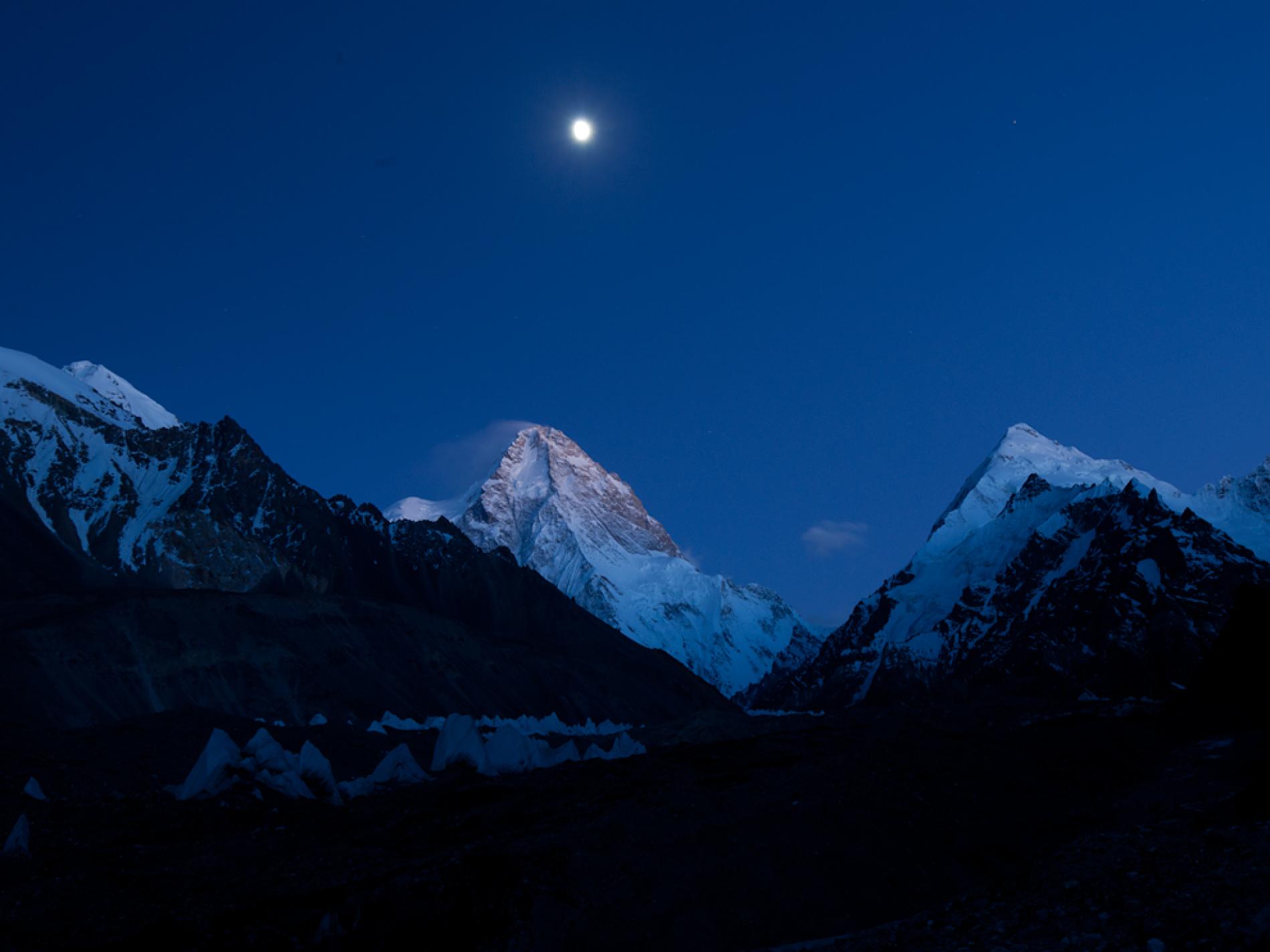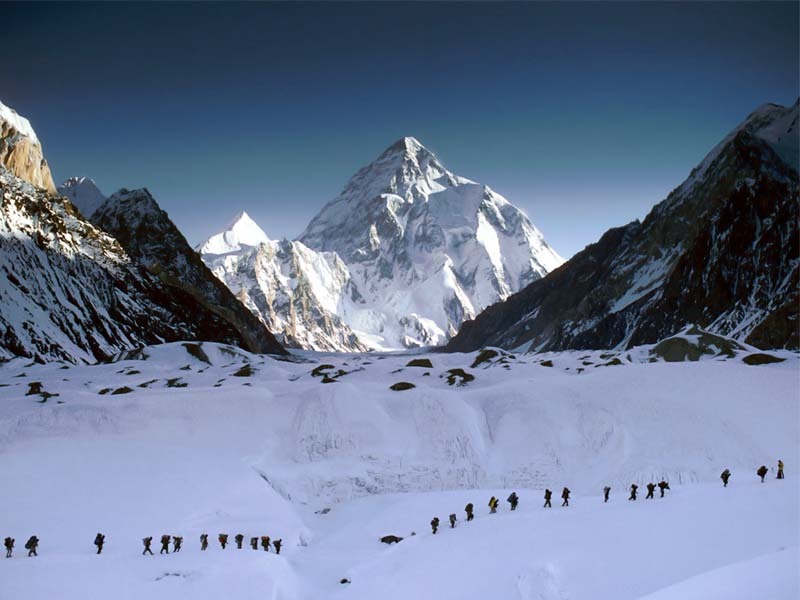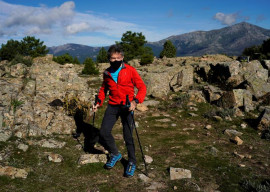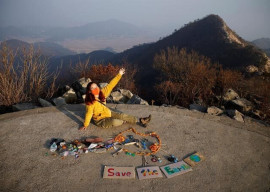1612921287-0/image-(2)1612921287-0.png)
The entire country prays for a miracle in finding renowned Pakistani mountaineer Muhammad Ali Sadpara after contact was lost with him during his quest to summit K2 in the perilous Karakoram winter, as rescue efforts cross 72 hours, the likelihood of any headway being made is slim.
Sher Khan, former climbing partner of the legendary Italian alpinist Reinhold Messner, gravely summed it up:"On K2, when they’re missing they’re dead.”
The Express Tribune looks into why the world's second highest peak is viewed as the deadliest to summit with one in four not coming out alive.
Why is it called K2?
First surveyed as part of the British Survey of India back in 1856, it was named K2 as it is found in the Karakoram Range to the northeast of the Himalayas on the Pakistan-China border. During the original survey, they gave all of the mountains K numbers. The surveyor would get the altitude of a mountain, write that down as K1 and the next one would be K2, K3, and so forth.

Later, they went back and asked local people, “What’s this mountain over here called?” Then they would give it a local name, like Gasherbrum or Kanjut Sar. But K2 is so remote even today – it’s 75 miles from the nearest village – that there wasn’t an agreed local name. So K2 stuck.
Why is it called the 'savage mountain'?
American climber George Bell described K2 as“a savage mountain that tries to kill you,” after being stretchered off the mountain with frostbitten feet in 1953
A towering pyramid of rock and ice, the steepness of K2’s slopes are daunting for the most experienced climbers. More than 70 people have died climbing the peak, a good many of them at the Bottleneck, where a wrong step can send a man hurtling off the South Face, where their body unlikely to be recovered.
It’s so deadly because of the combination of elements. It is about 800 feet lower than Everest, but the topography is much tougher. Climbing Everest you have stretches that are steep, then it flattens off. Very little of K2 ever flattens off. There’s a shoulder at about 24,000 feet when it flattens off briefly but that’s about the only respite. It’s also avalanche and rock fall-prone. It’s within the death zone, defined as above 25,000 feet where the pressure of oxygen is insufficient to sustain human life. And the weather is terrible and unpredictable.
Why is it so difficult to summit in winter?
K2 has long been considered too tough even to consider in winter. In fact, a winter ascent has only been attempted five times prior to this year.
The cold presents one of the most dangerous challenges, with temperatures dropping to -65 degrees centrigrade on the mountain. In such conditions, even the most benign mistake can have catastrophic consequences—a dropped glove can lead to frostbite in minutes, or even just touching bare skin to an ice axe for a moment can rip off a layer of skin. These or any one of a number of mishaps could force a climber to abandon the mountain.
But the wind is the real killer and looms as one of the major differences between winter and summer seasons. In winter, the Karakoram range, where K2 is located, experiences a stronger jet stream than the Himalaya. Gusts can reach hurricane force and pluck climbers off the side of the mountain in an instant. This partly explains why 8,000ers in Nepal, including Everest, were the first mountains to be summited in winter, while it would be more than 20 years before the 8000ers in the Karakoram were sought out as winter objectives.
 Another factor that adds significantly to K2’s difficulty in winter is the lack of snow on the mountain. The strong winds blow off the snow, leaving behind bare rock and brittle ice that makes the climbing considerably more technical and slower, thus exposing mountaineers to the brutal cold for longer periods.
Another factor that adds significantly to K2’s difficulty in winter is the lack of snow on the mountain. The strong winds blow off the snow, leaving behind bare rock and brittle ice that makes the climbing considerably more technical and slower, thus exposing mountaineers to the brutal cold for longer periods.
Winter is also a time of low barometric pressure, which translates to even less available oxygen than during high pressure weather windows in the summer.
What is the mountain's dreaded bottleneck?
The Bottleneck is a location along the South-East Spur, also known as Abruzzi Spur, of the mountain. It is a narrow couloir, which is overhung by seracs from the ice field east of the summit. The couloir is located only 1,300 feet below the summit, and climbers have to traverse about 330 feet exposed to the seracs to pass it. Due to the height of 26,900 feet, and the steepness of 50 to 60 degrees, this stretch is the most dangerous part of the route. It is estimated that 13 out of the last 14 fatalities on K2 have occurred at or near the bottleneck.




1730797299-0/BeFunky-collage-(21)1730797299-0-165x106.webp)


1730799445-0/Untitled-design-(52)1730799445-0-270x192.webp)
1730800230-0/Copy-of-Untitled-(5)1730800230-0-270x192.webp)









1730706072-0/Copy-of-Untitled-(2)1730706072-0-270x192.webp)
COMMENTS
Comments are moderated and generally will be posted if they are on-topic and not abusive.
For more information, please see our Comments FAQ